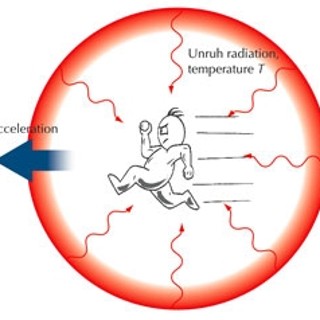Video
One of the reasons this is such a great video because it accurately shows the probability wave as a ‘rotating wave’ in the complex plane. Also it defines the volume as actual probability, which I didnt know was true.
Video
One of the reasons this is such a great video because it accurately shows the probability wave as a ‘rotating wave’ in the complex plane. Also it defines the volume as actual probability, which I didnt know was true.
https://upload.wikimedia.org/wikipedia/commons/2/2a/R%C3%BCckstoss1600.png
One of the hardest thing for me to comprohend of special relativity was the fact that an object moving fast through space moves slow through time, but that object sees us also as moving slower through time… this doesnt make sense!
But just as two rockets moving away from each other in outer space, where the question cannot be answered who actually is moving. The question who is actually going slower through time, is also meaningless. It is the exact same question.
Imagine just two straight lines crossing each other in a plane, which line is actually moving away from the other? This question doesnt make sense, and is exactly the same question as above.. The angle between the lines is what can be measured.
So there are two weird things about hawking radiation
In other words, this radiation is relative.
What if the CMB is just blackbody radiation because of the unruh effect? It would explain why it is so smooth and similar everywhere. Like the event horizon of the big bang is given it off or something, or basically the mass.

This derivation is based on this paper.
Equations used:
Special relativity:
Integrating over dt we get:
(1)
Equation(s) derived:
Derivation:
First find the hyperbolic orbit of the accelerated (Rindler) observer in the z direction, which are:
Then consider a plane wave with angular frequency omega_k and wave vector K parallel to the direction z. The lorentz transformation of the angular frequency omega_k looks like:
If we substitute equation (4) in the last equation we get:
With we get:
Then do some complicated algebra shown with
First step:
Conclusion:
(2)
Now consider the time-dependent phase, which is determined by:
Plugging in equation (2) and integrating we get for the phase:
Where the frequency spectrum S is determined like:
Substituting our formula we get a hard looking integral:
This integral looks hard and I can’t solve it, if we look at page 4 of the paper we can see it equals an equation that looks like a Planck Law.
Which looks like the planck law
If we compare the following factors:
Now we equate them for reasons I don’t get:
And we get:
Rearranging:
Solving for T, temperature:
We get the unruh temperature.

.
Fermat’s principle or the Brachistochrone done in the roller coaster tycoon, very cool.
This is related to the Principle of Least action.
Energy
Energy should just be called what it is: temporal momentum. Then we have:
These conceps are just derived of the central concept ‘momentum’, which is what keeps an object driving.